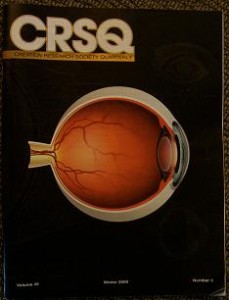 In a recent issue of Creation Research Society Quarterly, the problems with bat-interpretations were explained:
In a recent issue of Creation Research Society Quarterly, the problems with bat-interpretations were explained:
[Critics have suggested that sightings] were of the fruit bat called the “flying fox” (Kuban, 2007). But that bat has a maximum wingspan of 6 ft, and the best sightings that we have investigated include wingspan estimates that range from “at least 2 m, probably more” (Hennessy) to “30 and 50 ft” (Perth couple). The bat has almost no tail, unlike the reported tail of “at least 10–15 ft” (Hodgkinson) or “7 m” (G. Koro). It has no head crest, nor does it glow at night. Two hunters on Umboi Island witnessed a ropen hanging upright on a tree trunk; the bats hang head-down from branches (Table I). These details, as a whole, preclude bat sightings.
“Reports of Living Pterosaurs in the Southwest Pacific,” by Jonathan D. Whitcomb, in Creation Research Society Quarterly, Volume 45, Number 3 (Winter 2009).
Over the years, I have noticed that the general bat-explanation (for sighting reports of apparent living pterosaurs in the Southwest Pacific) comes from critics who fail to investigate the reports in detail. For example, Glen Kuban has a web page that for years has criticized the living-pterosaur investigations, yet he seems to have written little or nothing about the 1944 sighting by Duane Hodgkinson or the 1971 sighting by Brian Hennessy. Those are critical sightings that establish the credibility of the case for living pterosaurs in the Southwest Pacific. So why criticize in generalities while ignoring critical details? How much better to evaluate the detailed descriptions by Hodgkinson and Hennessy!


